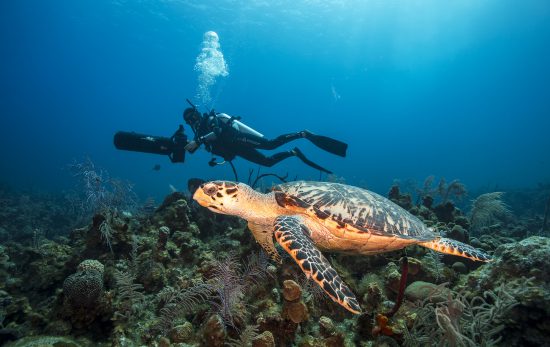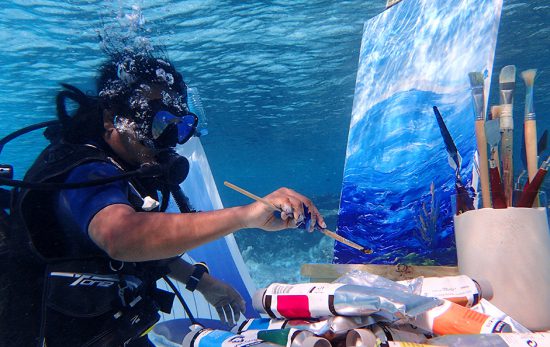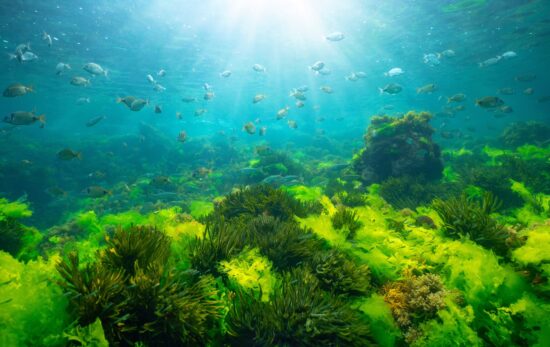When it comes to marine life interactions, there are clear do’s and don’ts. Divers learn in their very first scuba class not to damage, touch or harass underwater life, yet some choose to treat the underwater world like a petting zoo. In light of recent events, we wanted to review some essential guidelines for marine life encounters.
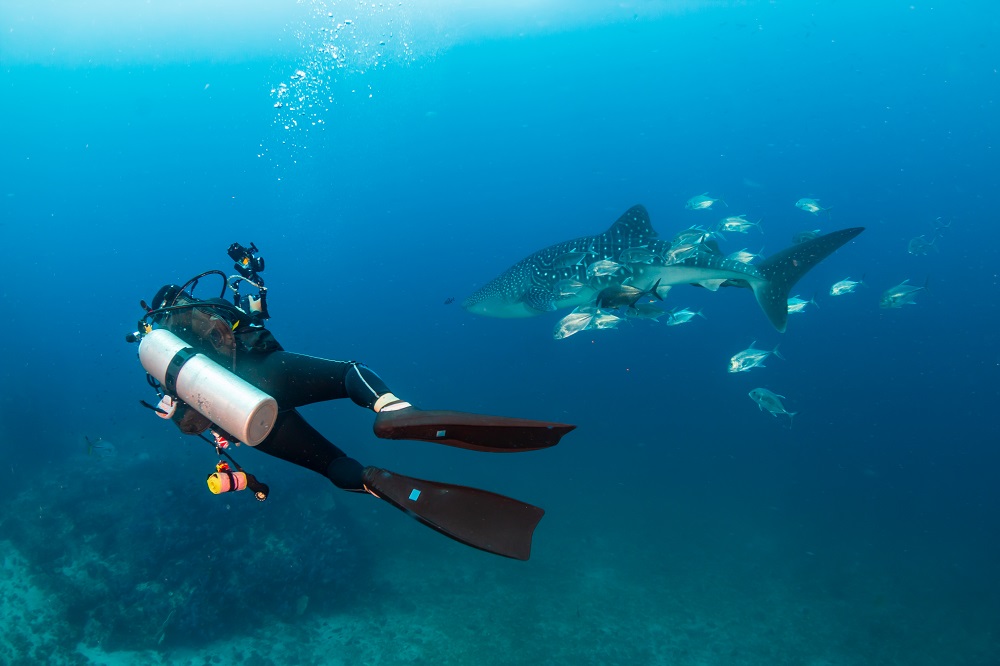
DON’T: Ride, Touch or Stand On Marine Life
The ocean is not a dude ranch. Whale sharks, turtles, and other pelagics aren’t domesticated animals. Instead, they are sensitive creatures that humans can easily injure.
DO: Keep off the Bottom
Avoid stepping on stingrays and other fragile marine life by keeping off the bottom. Mind your fin kicks to avoid disturbing animals, stirring up silt, kicking coral, and annoying other divers. The PADI Peak Performance Buoyancy course provides divers with extra knowledge and experience to keep off the bottom.
Avoid touching coral whenever possible, and be careful when finning near a reef. Some corals grow only .07 inches (2 centimeters) or less per year. An accidental kick or pinched-off branch can instantly destroy 50-100 years of growth.
DON’T: Chase Animals
There is one thing nearly every topside or underwater creature has in common: they run away when chased. Chasing after animals can stress them out, and alter natural behavior patterns. If a turtle, fish, octopus, or other critter is frightened, simply back off, lie low and be still. If the animal is curious enough, it might come out of hiding.
Chasing the animal is an excellent way to ensure you’ll never see it again. But, conversely, the best way to get close to marine life is to learn about its behavior and/or dive a rebreather.
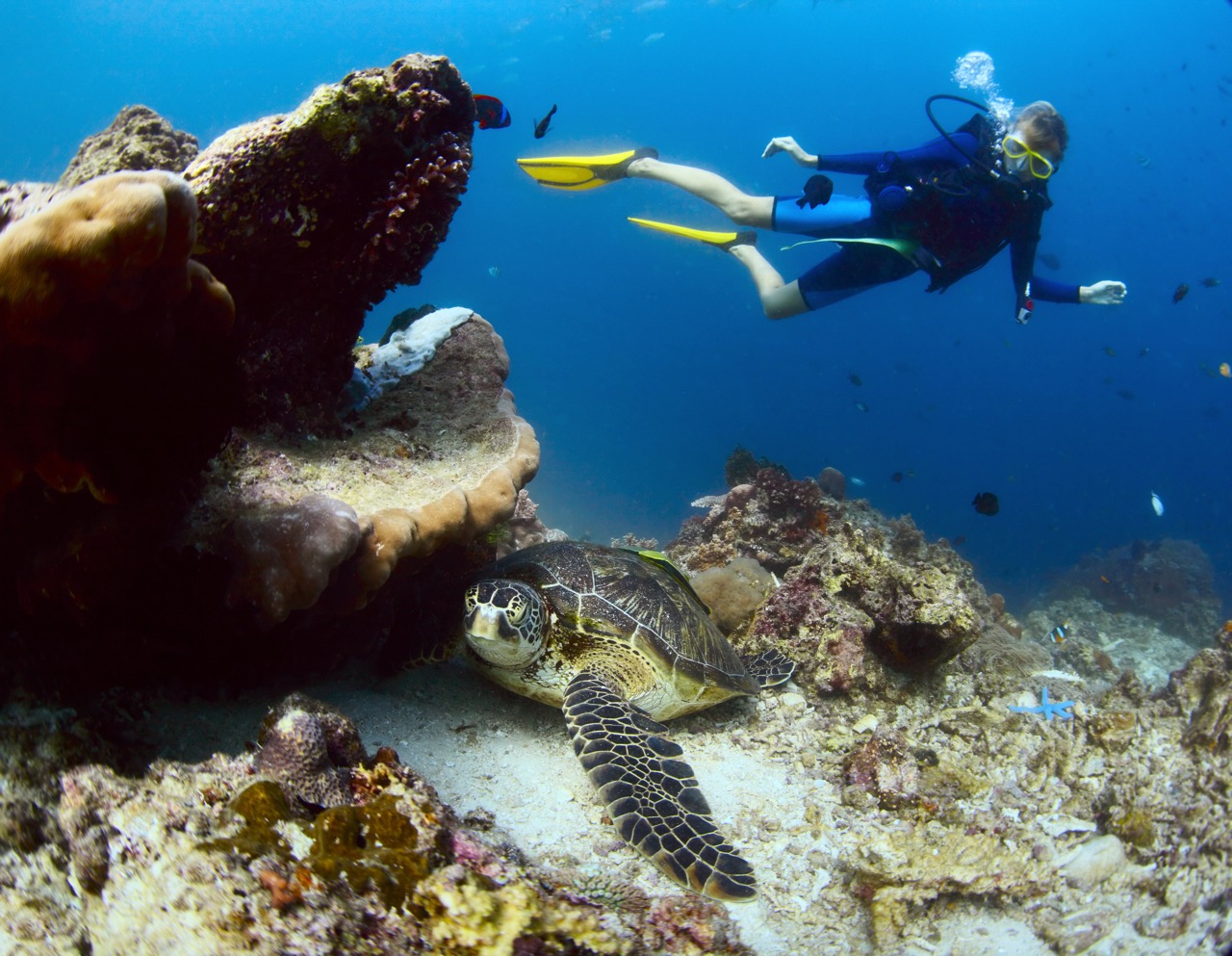
DO: Keep Your Hands to Yourself
Don’t agitate puffer or porcupine fish to make them puff. It’s hard on their internal systems, and repeated puffs can significantly shorten the life of these animals. Would you like it if someone poked you in the stomach until you vomited?
Even the most ignorant divers with no interest in the well-being of underwater life should keep their hands to themselves for one crucial reason: the well-camouflaged, extremely poisonous stonefish.
There are so many reasons to not touch animals while diving. In addition to being potentially harmful, some underwater creatures have layers that protect them from infection. For example, some rays have a protective mucus coating. The oils from our fingers can wear away the layers and leave animals vulnerable. Additionally, touching corals can cause stress and bleaching. And if that wasn’t enough, underwater animals can be more delicate than we think. Don’t risk it, now knowing your strength.
DO: Take Only Photos (and/or Trash), Leave Only Bubbles
Remove and report any debris you find underwater. It’s easier than ever with the free PADI AWARE® Dive Against Debris App (download from Google Play or the Apple App Store, and the newly revamped Dive Against Debris course (which now includes eLearning). Help conservationists and scientists pinpoint problem areas and advocate for positive change.
Do not remove seashells or other tokens from the ocean on your dives. Removing shells can negatively impact the ocean by decreasing the number of essential chemical compounds and the number of animals that rely on shells.
DON’T: Feed the Fish
A juvenile whale shark eats 46 pounds (20 kilograms) of plankton per day, and certain nudibranchs can eat fire coral, but neither of these diets would be good for a human. So just as it’s a bad idea for humans to eat fish food, it’s bad for fish to eat human food.
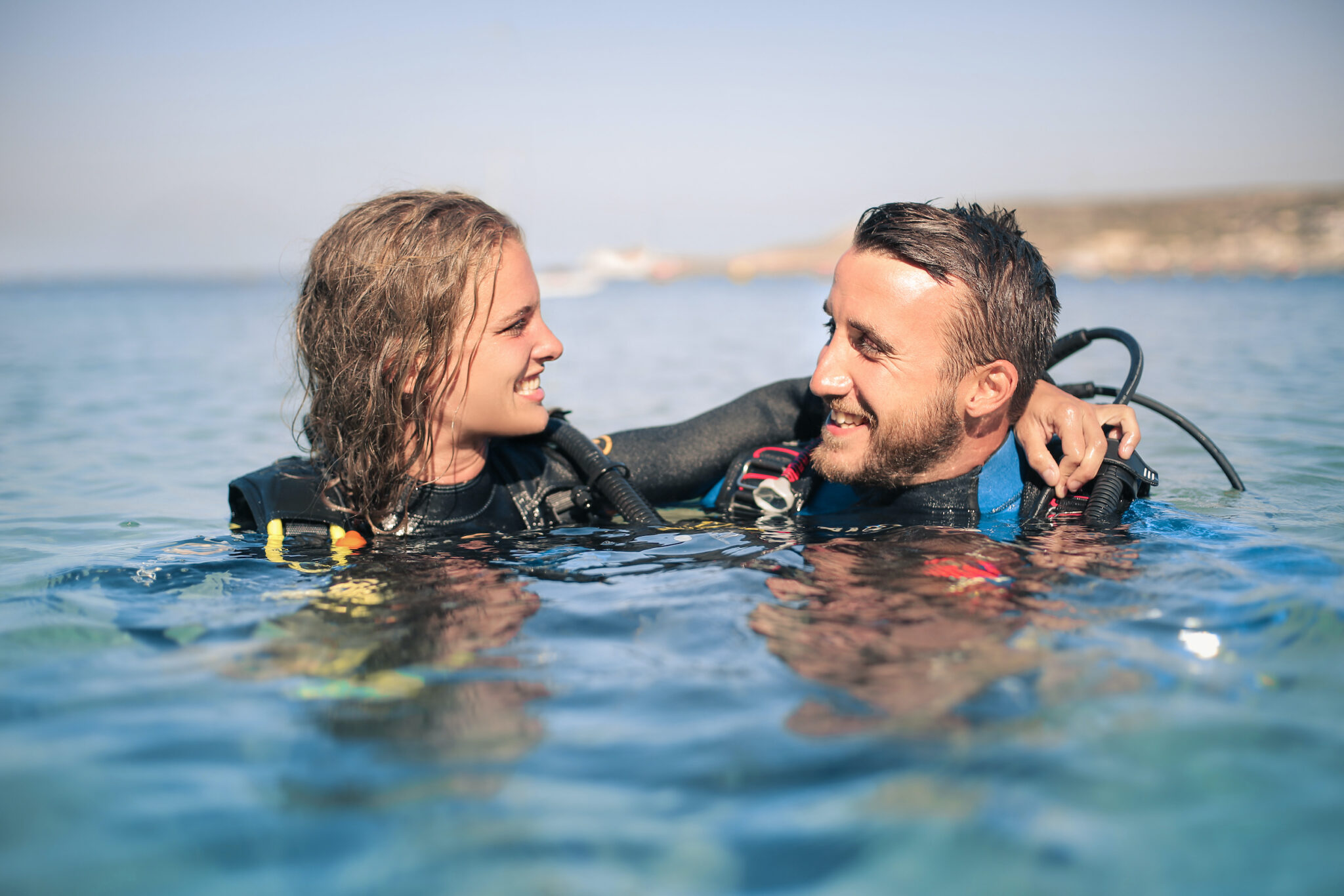
DO: Be a Voice for the Ocean
Share what you know about the ocean and responsible marine life interactions with people who don’t. If you are a PADI Torchbearer, use your experience to educate others about how important the ocean is, and what we can do to protect it.
DON’T: Be a Bystander
If you see something, say something. For example, if you observe another diver acting carelessly, or posting inappropriate behavior on social media, remind them of their responsibility to be an underwater steward.
Use what PADI Course Directors call the PADI sandwich: say something nice, explain what they did wrong, and then finish with something nice. Additionally, you can use some of the statistics and information in this article to educate them about why their behavior is harmful.
For example:
“👋 Hey! Great music choice for this Reel. As a fellow diver and ocean steward, I want to share with you why the behavior in this video may be concerning. When you chase an animal, even as it is swimming away from you, you can stress the animal out and alter its natural behavior pattern. Based on your video, I’m guessing you like marine life interactions. Next time, if you learn more about how an octopus acts, and lay low, hopefully you’ll see more natural behavior! Thanks for listening.”
If you don’t feel comfortable speaking to the diver about their actions, bring it up with a Divemaster, group leader, or an expert you trust.
DO: Choose a Responsible Dive Operator
Seek out dive operators and destinations that protect local marine life. At Ningaloo Reef in Western Australia, there is a code of conduct for interacting with whale sharks. Swimmers must stay 10 feet (3 meters) away from the head of the whale shark and 13 feet (4 meters) away from the tail-end. Touching animals, flash photography, and motorized propulsion (such as DPVs) are prohibited here.
If you find an operator who posts images of divers/swimmers handling animals, tell them they will not receive your business because of their disrespectful practices.

DO: Adopt the Blue
Adopt The Blue™ is the world’s largest network of underwater sites for ocean conservation that serves as a driving force for establishing new marine protected areas. Participants who Adopt the Blue will be asked to take targeted local action for measurable global impact. This direct approach to local conservation challenges creates more opportunities for all PADI operators, professionals, divers and other ocean enthusiasts to get actively involved in fins-on conservation activities.
DON’T: Block the Exits
Cleaning stations are a great place to observe marine life. When everyone dives responsibly, it’s a great opportunity to take photos.
Unfortunately, when divers block cleaning station entry and exit points, the animals will go elsewhere. If you don’t have a divemaster to guide you to an observation point, stay back until you can see where marine life choose to swim in and out. Then, position yourself clear of those areas.
DO: Make a Commitment and Share the Tips
NOAA’s Ocean Etiquette page states: “Each time someone visits the marine environment, they have the wonderful opportunity to encounter wildlife. However, the unfortunate potential to harm our marine life and resources exists with every visit.“
Protect the ecosystem we all love to dive. Commit to these responsible marine life interactions, and share PADI AWARE Foundation’s 10 Tips for Divers to Protect the Ocean Planet.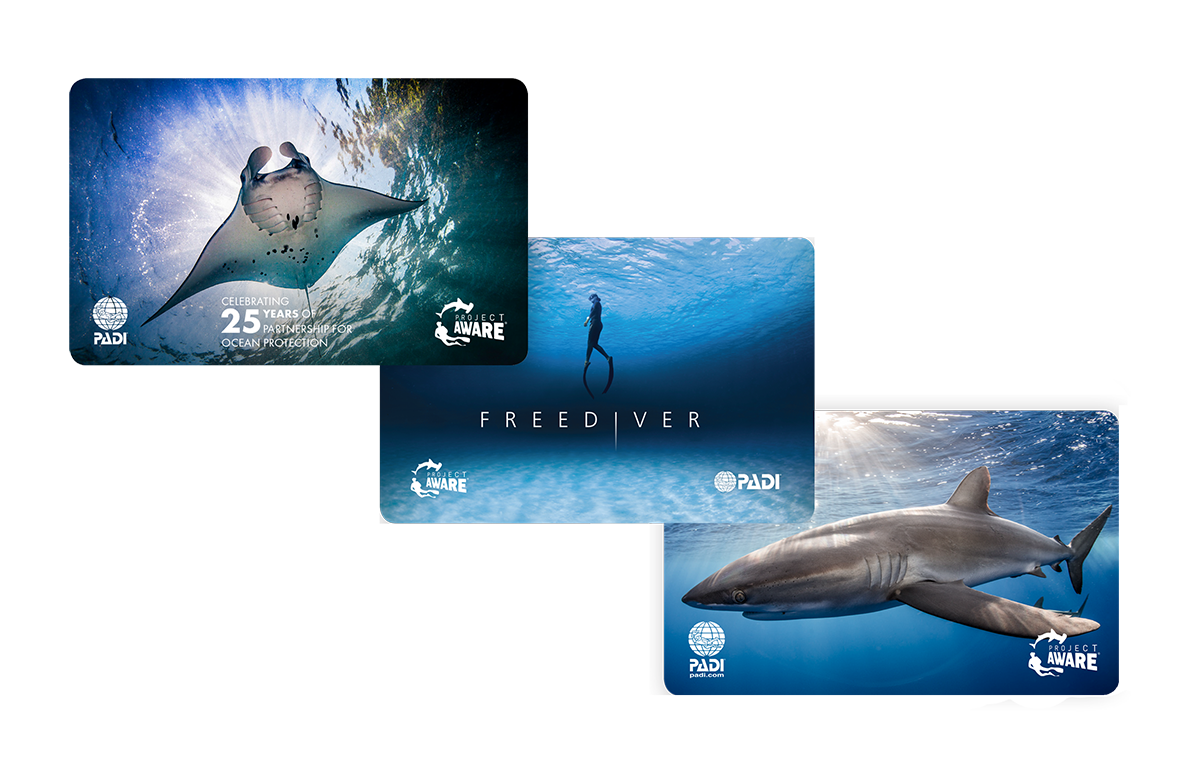
In addition to following the guidelines above, we encourage every diver to support the conservation efforts of PADI AWARE Foundation. Make a donation, get an AWARE certification card, or participate in an AWARE Week event 17-25 September 2022.

